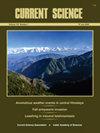利用流域指南追踪印度流域发展轨迹:政策见解
IF 1
4区 综合性期刊
Q3 MULTIDISCIPLINARY SCIENCES
引用次数: 1
摘要
本研究根据流域规划的指导方针追溯了印度流域的发展。我们探讨了流域指南的变化和修改,并将发展变化分为六个不同但又相互联系的阶段。我们注意到,流域准则针对土地退化、生计安全、性别和社会公平、减缓和适应气候变化等新出现的挑战进行了微调。最近,通过促进有利的体制环境,流域的重点已从以生产为中心转向以收入为中心。印度流域方案的经验和教训为其他执行这类方案的发展中国家提供了见解。本文章由计算机程序翻译,如有差异,请以英文原文为准。
Tracing the trajectory of watershed development in India using watershed guidelines: policy insights
This study traces the development of watersheds in India based on the governing guidelines of the watershed programmes. We explore the changes and modifications in the watershed guidelines and categorize the developmental changes into six distinct yet interlinked phases. We observed that the watershed guidelines were fine-tuned with emerging challenges of land degradation, livelihood security, gender and social equity, climate change mitigation and adaptations. Recently, the focus of watersheds has shifted from production centric to income-centric by promoting enabling institutional settings. The experiences and learnings from India’s watershed programmes provide insights for other developing countries implementing such programmes.
求助全文
通过发布文献求助,成功后即可免费获取论文全文。
去求助
来源期刊

Current Science
综合性期刊-综合性期刊
CiteScore
1.50
自引率
10.00%
发文量
97
审稿时长
3 months
期刊介绍:
Current Science, published every fortnight by the Association, in collaboration with the Indian Academy of Sciences, is the leading interdisciplinary science journal from India. It was started in 1932 by the then stalwarts of Indian science such as CV Raman, Birbal Sahni, Meghnad Saha, Martin Foster and S.S. Bhatnagar. In 2011, the journal completed one hundred volumes. The journal is intended as a medium for communication and discussion of important issues that concern science and scientific activities. Besides full length research articles and shorter research communications, the journal publishes review articles, scientific correspondence and commentaries, news and views, comments on recently published research papers, opinions on scientific activity, articles on universities, Indian laboratories and institutions, interviews with scientists, personal information, book reviews, etc. It is also a forum to discuss issues and problems faced by science and scientists and an effective medium of interaction among scientists in the country and abroad. Current Science is read by a large community of scientists and the circulation has been continuously going up.
Current Science publishes special sections on diverse and topical themes of interest and this has served as a platform for the scientific fraternity to get their work acknowledged and highlighted. Some of the special sections that have been well received in the recent past include remote sensing, waves and symmetry, seismology in India, nanomaterials, AIDS, Alzheimer''s disease, molecular biology of ageing, cancer, cardiovascular diseases, Indian monsoon, water, transport, and mountain weather forecasting in India, to name a few. Contributions to these special issues ‘which receive widespread attention’ are from leading scientists in India and abroad.
 求助内容:
求助内容: 应助结果提醒方式:
应助结果提醒方式:


